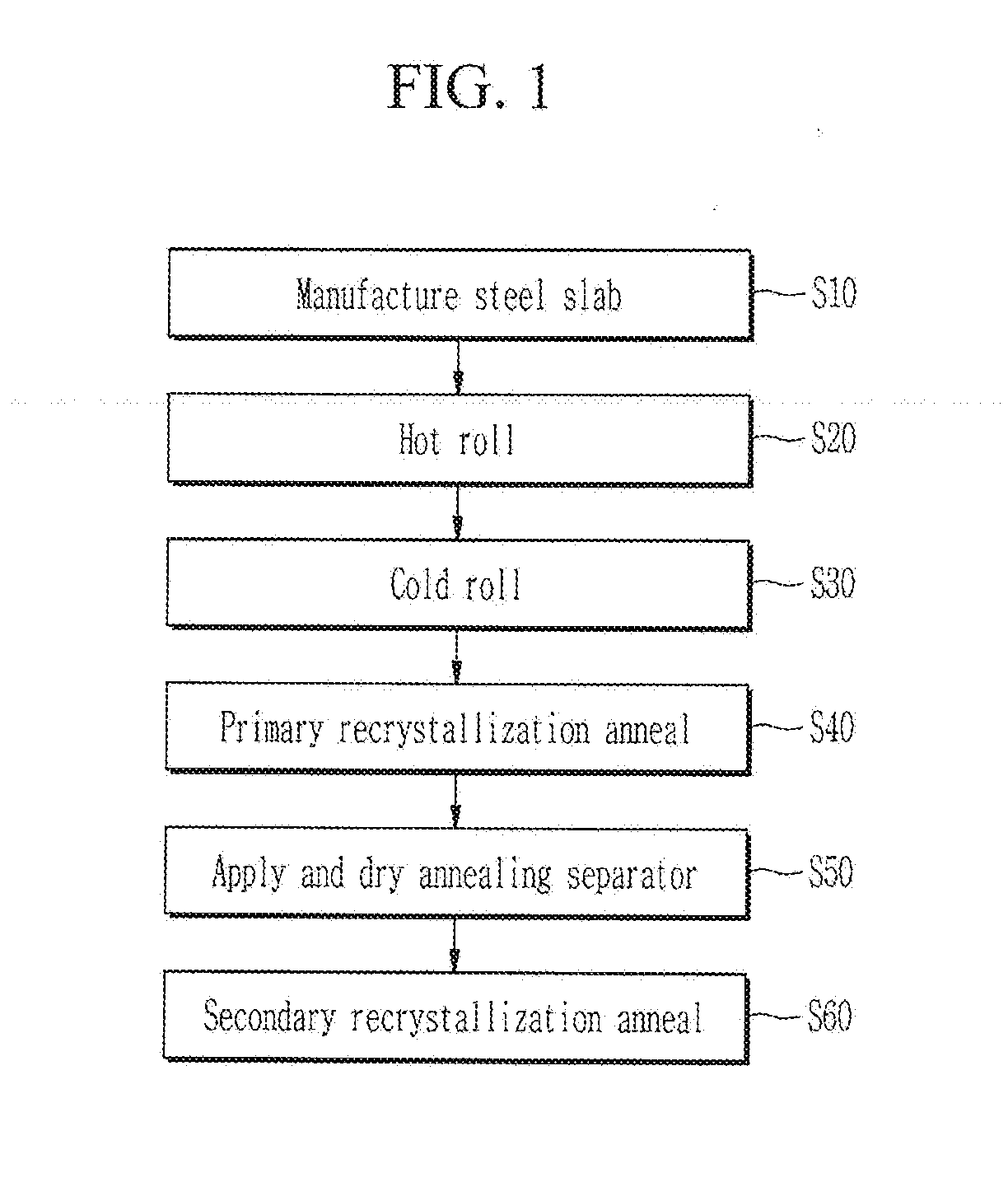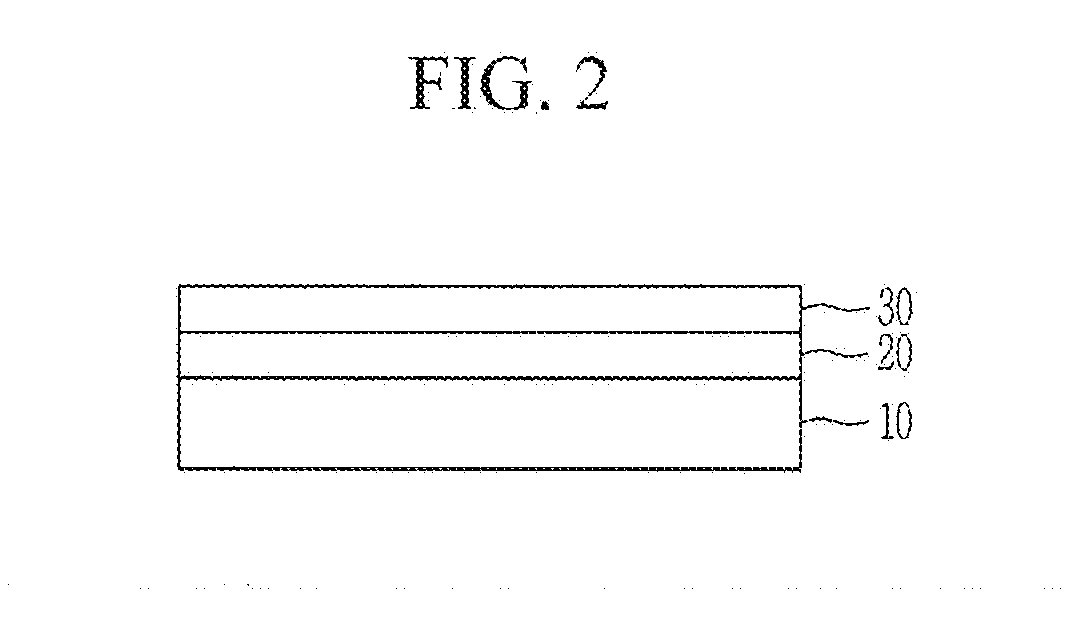Method for manufacturing grain-oriented electrical steel sheet
a technology of electrical steel and grain, which is applied in the direction of manufacturing tools, furnaces, heat treatment equipment, etc., can solve the problems of secondary recrystallization grain growth, difficult to secure a proper primary recrystallization grain size, and oxidizing ability to be controlled, so as to achieve the effect of reducing iron loss and eliminating unevenly
- Summary
- Abstract
- Description
- Claims
- Application Information
AI Technical Summary
Benefits of technology
Problems solved by technology
Method used
Image
Examples
example
[0142]A steel slab was produced to include 3.2 wt % of Si, 0.055 wt % of C, 0.12 wt % of Mn, 0.026 wt % of Al, 0.0042 wt % of N, and 0.0045 wt % of S and further to include Sn, Sb, and P as shown in the following Table 1. The steel slab having the slab component system 1 was hot-rolled to produce a 2.8 mm hot-rolled sheet, then the hot-rolled sheet was annealed and pickled, and then the sheet was cold-rolled to produce the cold-rolled sheet having a final thickness of 0.23 mm.
TABLE 1slabSi Sn P Sb component contentcontentcntentcontentsystem(wt %)(wt %)(wt %)(wt %)Classification13.20.060.0350.025Inventive material23.2———Comparative material
[0143]The cold-rolled steel sheet was then subjected to primary recrystallization annealing. Then, the steel sheet was maintained at a soaking temperature of 875° C. in a mixed atmosphere of 74 volume % hydrogen, 25 volume % of nitrogen, and 1 volume % of dry ammonia gas for 180 seconds, resulting in the decarburization and nitriding. At this time,...
experimental example
[0148]The roughness, glossiness, iron loss and magnetic flux density of grain-oriented electrical steel sheets prepared in Exemplary Examples 1 and 2 and Comparative Examples 1 to 16 were measured, and the results are showed in the following Table 3. The glossiness is Gloss in which the amount of light reflected the surface measured at a reflection angle of 60° is based on the mirror surface glossiness 1000.
TABLE 3magnetic Iron flux roughnessglossinesslossdensity(Ra:mm)(index)(W17 / 50)B8Exemplary Example 10.453200.851.93Exemplary Example 20.353000.871.92Comparative Example 10.65520.971.91Comparative Example 20.68471.201.85Comparative Example 30.61501.151.87Comparative Example 40.67480.961.91Comparative Example 50.63461.381.83Comparative Example 60.68421.321.84Comparative Example 70.333090.921.88Comparative Example 80.353320.911.89Comparative Example 90.71390.951.91Comparative Example 100.61511.181.86Comparative Example 110.63531.121.88Comparative Example 120.70450.961.91Comparative E...
PUM
| Property | Measurement | Unit |
|---|---|---|
| thickness | aaaaa | aaaaa |
| temperatures | aaaaa | aaaaa |
| temperature | aaaaa | aaaaa |
Abstract
Description
Claims
Application Information
 Login to View More
Login to View More - R&D
- Intellectual Property
- Life Sciences
- Materials
- Tech Scout
- Unparalleled Data Quality
- Higher Quality Content
- 60% Fewer Hallucinations
Browse by: Latest US Patents, China's latest patents, Technical Efficacy Thesaurus, Application Domain, Technology Topic, Popular Technical Reports.
© 2025 PatSnap. All rights reserved.Legal|Privacy policy|Modern Slavery Act Transparency Statement|Sitemap|About US| Contact US: help@patsnap.com



